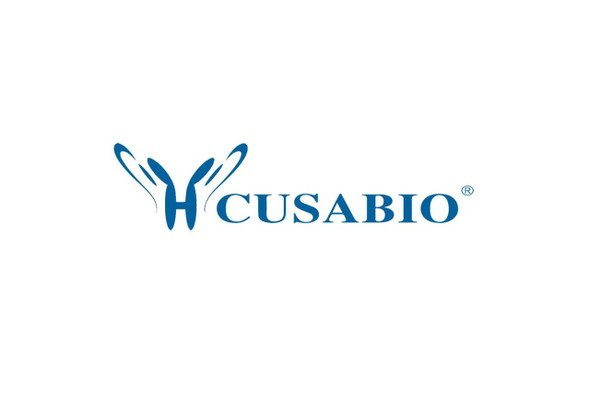Cusabio Klebsiella pneumoniae Recombinants
Recombinant Klebsiella pneumoniae Undecaprenyl phosphate-alpha-4-amino-4-deoxy-L-arabinose arabinosyl transferase (arnT), partial | CSB-EP471321KBH
- SKU:
- CSB-EP471321KBH
- Availability:
- 3 - 7 Working Days
Description
Recombinant Klebsiella pneumoniae Undecaprenyl phosphate-alpha-4-amino-4-deoxy-L-arabinose arabinosyl transferase (arnT), partial | CSB-EP471321KBH | Cusabio
Alternative Name(s): 4-amino-4-deoxy-L-arabinose lipid A transferase Lipid IV(A) 4-amino-4-deoxy-L-arabinosyltransferase Undecaprenyl phosphate-alpha-L-Ara4N transferase
Gene Names: arnT
Research Areas: Epigenetics and Nuclear Signaling
Organism: Klebsiella pneumoniae (strain 342)
AA Sequence: RVIDSKQPQFLVDIVSESLQPSRYVLTNNVGIAGGLAWELKRSDIIMFDKQGELKYGLDWPDAQGSFVSQAGFADWLATHRQQGPVSLVLLMDKGESMVDLPLPKPDNAYELGRVVFLQYLPQ
Source: E.coli
Tag Info: N-terminal 6xHis-tagged
Expression Region: 429-551aa
Sequence Info: Partial
MW: 17.8 kDa
Purity: Greater than 90% as determined by SDS-PAGE.
Relevance: Catalyzes the transfer of the L-Ara4N moiety of the glycolipid undecaprenyl phosphate-alpha-L-Ara4N to lipid A. The modified arabinose is attached to lipid A and is required for resistance to polymyxin and cationic antimicrobial peptides. Catalytic activity 4-amino-4-deoxy-alpha-L-arabinopyranosyl di-trans,octa-cis-undecaprenyl phosphate + lipid IV(A) = lipid II(A) + di-trans,octa-cis-undecaprenyl phosphate. Pathway: 4-amino-4-deoxy-beta-L-arabinose-lipid A biosynthesis This protein is involved in the pathway 4-amino-4-deoxy-beta-L-arabinose-lipid A biosynthesis, which is part of Lipopolysaccharide metabolism.
Reference: "Complete genome sequence of the N2-fixing broad host range endophyte Klebsiella pneumoniae 342 and virulence predictions verified in mice." Fouts D.E., Tyler H.L., DeBoy R.T., Daugherty S., Ren Q., Badger J.H., Durkin A.S., Huot H., Shrivastava S., Kothari S., Dodson R.J., Mohamoud Y., Khouri H., Roesch L.F.W., Krogfelt K.A., Struve C., Triplett E.W., Methe B.A. PLoS Genet. 4:E1000141-E1000141(2008)
Storage: The shelf life is related to many factors, storage state, buffer ingredients, storage temperature and the stability of the protein itself. Generally, the shelf life of liquid form is 6 months at -20?/-80?. The shelf life of lyophilized form is 12 months at -20?/-80?.
Notes: Repeated freezing and thawing is not recommended. Store working aliquots at 4? for up to one week.
Function:
Involvement in disease:
Subcellular Location:
Protein Families:
Tissue Specificity:
Paythway:
Form: Liquid or Lyophilized powder
Buffer: If the delivery form is liquid, the default storage buffer is Tris/PBS-based buffer, 5%-50% glycerol. If the delivery form is lyophilized powder, the buffer before lyophilization is Tris/PBS-based buffer, 6% Trehalose, pH 8.0.
Reconstitution: We recommend that this vial be briefly centrifuged prior to opening to bring the contents to the bottom. Please reconstitute protein in deionized sterile water to a concentration of 0.1-1.0 mg/mL.We recommend to add 5-50% of glycerol (final concentration) and aliquot for long-term storage at -20?/-80?. Our default final concentration of glycerol is 50%. Customers could use it as reference.
Uniprot ID: B5XTL1
HGNC Database Link: N/A
UniGene Database Link: N/A
KEGG Database Link: N/A
STRING Database Link: N/A
OMIM Database Link: N/A









